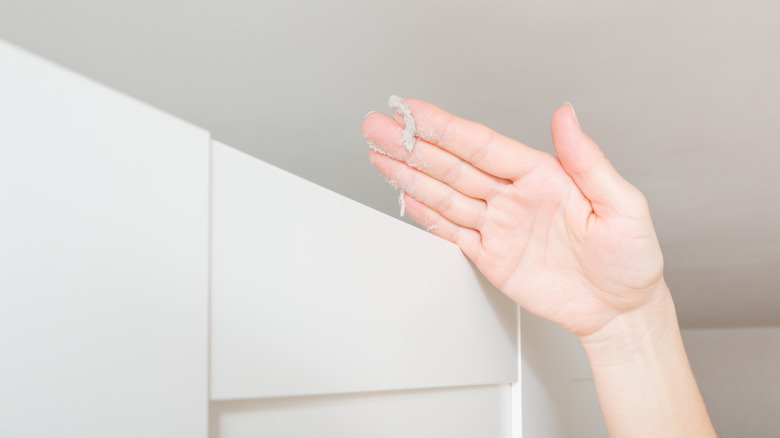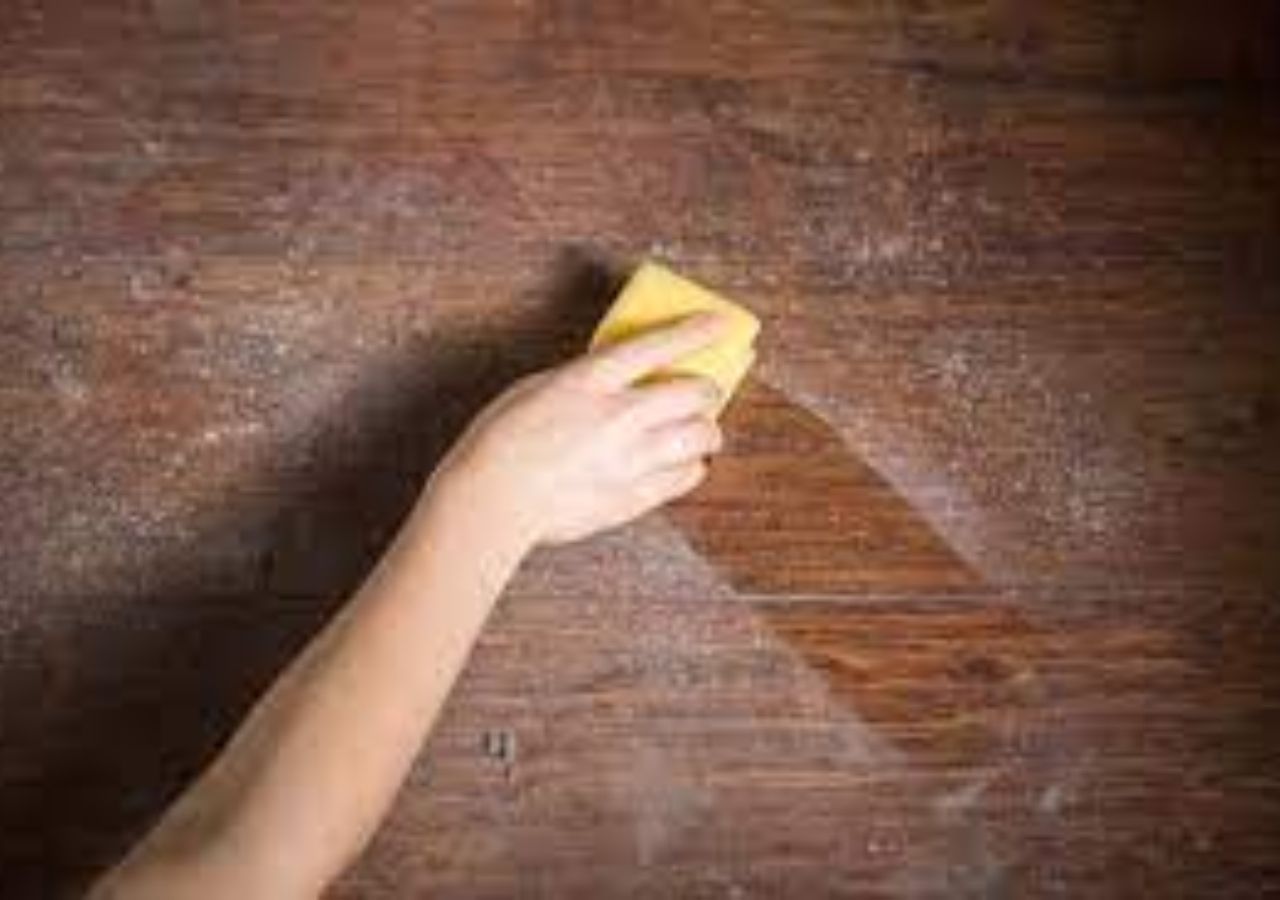Gathering Your Supplies

Cleaning the dust off the top of your cabinets requires a few essential tools and cleaning materials. These supplies will help you reach those hard-to-access areas and effectively remove dust without damaging your cabinets.
Types of Dusters, How to clean dust from top of cabinets
Choosing the right duster is crucial for effectively cleaning dust from your cabinets without causing scratches or leaving streaks. The following table showcases different types of dusters and their suitability for various cabinet materials:
| Duster Type | Wood | Laminate | Metal |
|---|---|---|---|
| Microfiber Duster | ✔️ | ✔️ | ✔️ |
| Feather Duster | ✔️ | ✔️ | ✔️ |
| Swiffer Duster | ✔️ | ✔️ | ✔️ |
| Electrostatic Duster | ✔️ | ✔️ | ✔️ |
| Dusting Cloth | ✔️ | ✔️ | ✔️ |
Cleaning Products
A variety of cleaning products can be used to remove dust from cabinet tops, each with its own effectiveness and potential safety concerns.
- All-Purpose Cleaner: This versatile cleaner can be used on most cabinet surfaces. However, it’s important to dilute it according to the manufacturer’s instructions to avoid damaging the finish.
- Wood Polish: For wooden cabinets, a wood polish can help remove dust and add a protective layer. However, some wood polishes can leave a residue, so it’s essential to test them in an inconspicuous area first.
- Furniture Polish: Similar to wood polish, furniture polish can remove dust and enhance the shine of your cabinets. However, avoid using it on laminate surfaces, as it can leave a sticky residue.
- Distilled Water: A simple solution of distilled water can be effective for removing dust from most cabinet surfaces. It’s a safe and gentle option, especially for delicate finishes.
Preparing the Area: How To Clean Dust From Top Of Cabinets

Before you start dusting those high shelves, it’s crucial to clear the surrounding area. This not only ensures a safe and efficient cleaning process but also helps prevent accidents and potential damage to your belongings.
Safety First: Clearing the Area
A cluttered area can pose a trip hazard, especially when using a ladder or step stool. It’s essential to remove any objects that could obstruct your path or create an uneven surface. This includes items like furniture, boxes, or even loose rugs. Clear a path around the cabinets, ensuring you have enough space to move freely and maintain your balance.
Safe Access: Utilizing Ladders or Step Stools
To reach the top of your cabinets safely, you’ll need a sturdy ladder or step stool. Always choose a ladder or step stool that is the appropriate height for the task at hand. Ensure it is in good condition, with no missing or damaged parts. Always place the ladder on a level surface and lock it in place before climbing.
- Ladder Safety: When using a ladder, always face the ladder while climbing and descending. Maintain three points of contact with the ladder at all times, using both hands and one foot or two feet and one hand. Never reach too far to the side while on a ladder, as this can throw off your balance.
- Step Stool Safety: Step stools should also be placed on a level surface and should be tall enough to allow you to reach the top of the cabinets without overstretching. Always make sure the step stool is stable before stepping on it. Never use a chair or other unstable object as a substitute for a ladder or step stool.
Protecting Valuables: Handling Fragile Items
When dusting items stored on top of cabinets, exercise caution, especially if they are fragile or valuable. Be mindful of their weight and any delicate details they may have.
- Gentle Touch: Use a soft cloth or duster to avoid scratching or damaging delicate surfaces. Handle items with care and avoid dropping or bumping them against other objects.
- Secure Placement: If you need to move items to dust the cabinet, carefully place them in a safe location, away from the edge of the cabinet or any other potential hazards. Avoid stacking items precariously, as this could lead to a fall.
Cleaning Techniques

Dusting the top of cabinets requires a combination of techniques and tools depending on the type of cabinet material and the extent of dust accumulation. Choosing the right cleaning method is crucial to achieve a dust-free and spotless finish without damaging the cabinet surfaces.
Dusting Techniques
The choice of dusting technique depends on the type of dust and the surface material. Here are some common techniques:
- Microfiber cloths: These are excellent for collecting dust and grime, especially on delicate surfaces like wood or painted cabinets. They are soft and absorbent, preventing scratches. To use, gently wipe the surface in a circular motion, working from top to bottom.
- Feather dusters: These are ideal for light dusting and reaching narrow spaces. They are lightweight and effective in collecting dust without scattering it. However, they may not be suitable for sticky or heavy dust. To use, gently stroke the surface in one direction, avoiding excessive pressure.
- Vacuum attachments: A crevice tool or upholstery brush attachment on a vacuum cleaner can be effective for removing dust from hard-to-reach areas, such as corners and crevices. These attachments provide suction power to remove dust particles efficiently. Use gentle strokes and avoid excessive pressure to prevent damage to the cabinet surface.
Dry vs. Damp Cleaning
The effectiveness of dry vs. damp cleaning methods varies depending on the cabinet material.
- Dry cleaning is generally preferred for delicate surfaces like wood, as it prevents moisture damage. Dry microfiber cloths or feather dusters are suitable for these surfaces. However, dry cleaning may not be effective for removing sticky dust or grime.
- Damp cleaning is more effective for removing sticky dust and grime from surfaces like laminate or painted cabinets. Use a slightly damp microfiber cloth with a mild cleaning solution, such as diluted dish soap or a specialized cabinet cleaner. Avoid saturating the cloth and ensure it is wrung out thoroughly to prevent water damage.
Cleaning Hard-to-Reach Areas
Cleaning corners and crevices requires specialized tools and techniques.
- Crevice tools: Vacuum attachments with crevice tools are essential for reaching narrow spaces and corners. They provide suction power to remove dust particles efficiently without scratching the surface. Gently insert the tool into the crevices and move it back and forth, ensuring thorough cleaning.
- Microfiber cloths: Small microfiber cloths can be used to clean hard-to-reach areas by wrapping them around a finger or a small tool. Gently wipe the surface, ensuring thorough cleaning of the crevices.
- Cotton swabs: Cotton swabs are ideal for cleaning tight spaces and crevices where other tools cannot reach. Dip a cotton swab in a mild cleaning solution and gently wipe the surface, ensuring thorough cleaning.
How to clean dust from top of cabinets – Yo, cleaning dust from the top of cabinets is a real pain, but it’s gotta be done. You know, if you’re looking for some fresh storage solutions, check out the seville classics ultra hd 2 door medium cabinet. It’s got a sleek design and tons of space.
Anyway, back to the dust, grab a microfiber cloth and some dusting spray, and you’ll be good to go.
Yo, cleaning dust from the top of cabinets is a real chore, but it’s gotta be done. Those high shelves are like dust magnets, especially if you’re rocking white shaker cabinet doors – they look super clean, but dust shows up on ’em like a bad haircut.
Grab a microfiber cloth and a step stool, and get to work. Your cabinets will be lookin’ fresh in no time.
